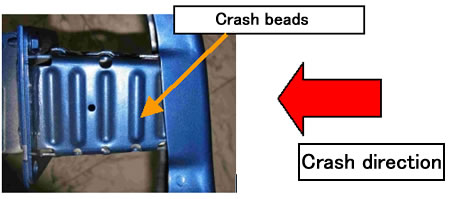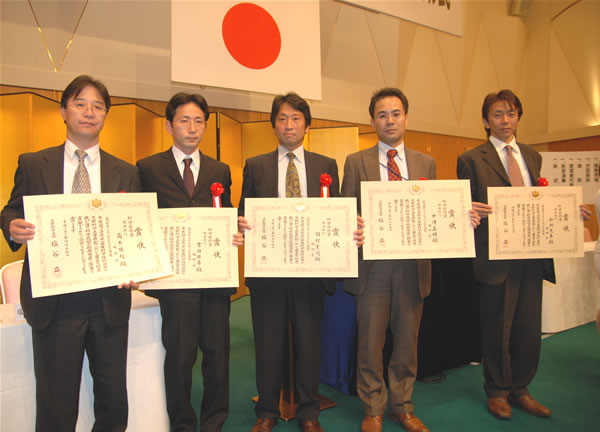Sumitomo Metals Won a Science and Technology Commendation from Minister of Education, Culture, Sports, Science and Technology with its Development of Crash-box that Improves Fuel Efficiency and Crash Safety
2009.04.14
- Sumitomo Metal Industries, Ltd.
Development of a crash box that absorbs high crash energy earned Sumitomo Metal Industries, Ltd. (Sumitomo Metals) and Toyoda Iron Works Co., Ltd. a joint award of a Commendation from the Minister of Education, Culture, Sports, Science and Technology for fiscal year 2009, in the Development Category for Science and Technology, today.
A crash box is the body structure at the end of a car frame and can provide to improve crash safety for automobile passengers. It deforms at the time of a frontal or rear crash, absorbing the energy of the impact before deforming interior of the vehicle.
Sumitomo Metals and Toyoda Iron Works jointly developed the design scheme of a new crash box that reduces the mass and improves crash energy absorption.
In addition to improvement in fuel economy and crash safety, the companies have also enabled a reduction in manufacturing costs.

Figure 1 Crash boxes and frames
1. Object for commendation
The Commendation was given for a new crash box, which is a structural material for absorbing crash impact of cars and has realized both mass reduction and superior crash safety.
2. Details of the development
(1) Development background and design features
In recent years, there is a greater demand for improving automobile fuel economy and crash safety. Sumitomo Metals collaborated with Toyoda Iron Works to develop and commercialize a new automotive part to respond to both needs. Their efforts resulted in development of a crash box that enables significant weight reduction and higher crash energy absorption, leading into its commercial adoption for many makes of cars. This development has been highly evaluated in the automobile industry and now has also been recognized by the Japanese government.
(2) Challenges faced in development work
A crash box enables improved safety for passengers and reduced damage to the automotive body by absorbing crash energy at the time of car collision. In order to improve performance in energy absorption relative to previous technology, a crash box with a high strength is needed. However, acceptable results cannot be attained by making the crash box stronger than the frame. What is required of the crash box, by way of improvement of its efficiency in absorbing energy, is greater buckling deformation when the collision impact reaches the predetermined upper limit of intensity.
(3) Use of thinner sheets without sacrificing superior performance in absorbing impact
Conventionally, as shown in Figure 2, a crash box has several grooves called ¡Ècrash beads" that are at 90 degrees to a direction of frontal or rear crash. The beads undergo buckling deformation and make the crash box compress like an accordion, absorbing the energy of impact. The larger the number of plastic buckling is, the more crash energy is absorbed but the less durable the beads become. Thus, conventional crash boxes have the upper limit in the number of beads.

Figure 2: Conventional crash box
Sumitomo Metals and Toyoda Iron Works have developed an innovative cross sectional shape as part of the design of the crash box that ensures crash deformation without a crash bead. As shown in Figure 3, the new crash box has horizontal grooves in the direction of a frontal or rear collision, which enable formation of finely detailed wrinkles and absorption of more impact energy than the conventional box.
A crash box designed with this technology can absorb more than twice the impact energy of the conventional crash box while its weight can be reduced by about 30% and its manufacturing costs, by about 20%.

Figure 3: Newly developed crash box
3. Future development
Responding to heightened demand for improvement in fuel efficiency and crash, Sumitomo Metals and Toyoda Iron Works developed a high efficiency crash box, that has been favorably evaluated and widely adopted for use in various models of cars in Japan and overseas, including Vitz(Yaris) from the Toyota Motor Corporation and Atenza from the Mazda Motor Corporation. Sumitomo Metals will continue to work at further development of this technology and other technology that contributes to improvement in mass reduction and crash worthiness of automobiles.

